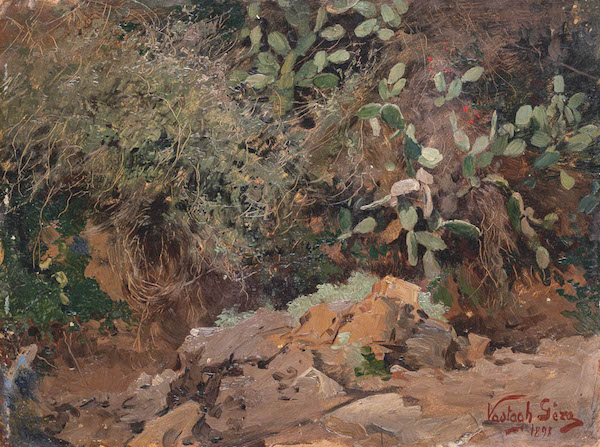Biography
In 1886 he went to Munich. Here he first attended Simon Hollósy's private school and then became a pupil of Gabriel von Hackl at the Academy of Fine Arts. He returned to Budapest in 1888. In 1889 he was on a study trip to France. In 1898, he spent four months in Algeria and Tunisia on a state scholarship, where he studied the lion and its habitat, making photographs and sketches on the subject.
At the age of seventeen, he participated in his first exhibition at the Kunsthalle, and in 1887 he was included in the exhibition at the Glaspalast in Munich. At home, in the same year, he was a success at the exhibition of the Society of Fine Arts with his painting entitled Resting Peasant Girl, which was bought by Franz Joseph I. His choice of subject matter focused on animals. He painted chickens and ducks, and later made a name for himself with his lion and tiger portraits. In 1888, he was awarded the György Ráth Prize for his paintings of watching lions. Later his interest turned to the Hungarian grey cattle, which he studied mainly in Mezőhegyes. It was here that he made his painting Who is the lad in the herd?, which won the state gold medal at the winter exhibition of the Kunsthalle in 1895.
In the period after the turn of the century, he made field observations in the Hamburg, Leipzig and Berlin zoos, mostly in pastel. In 1910 he spent time in the Tatras, from where he returned home with many landscapes.
His exhibition of his landscapes was held at the Kunsthalle in 1920. His pictures were exhibited in 1934 at the Kunsthalle in Budapest. In 1934, he was included in an exhibition of the Vastagh family of artists at the Ernst Museum in Budapest in 1934. Many of his works have been shown in Britain and the United States.

